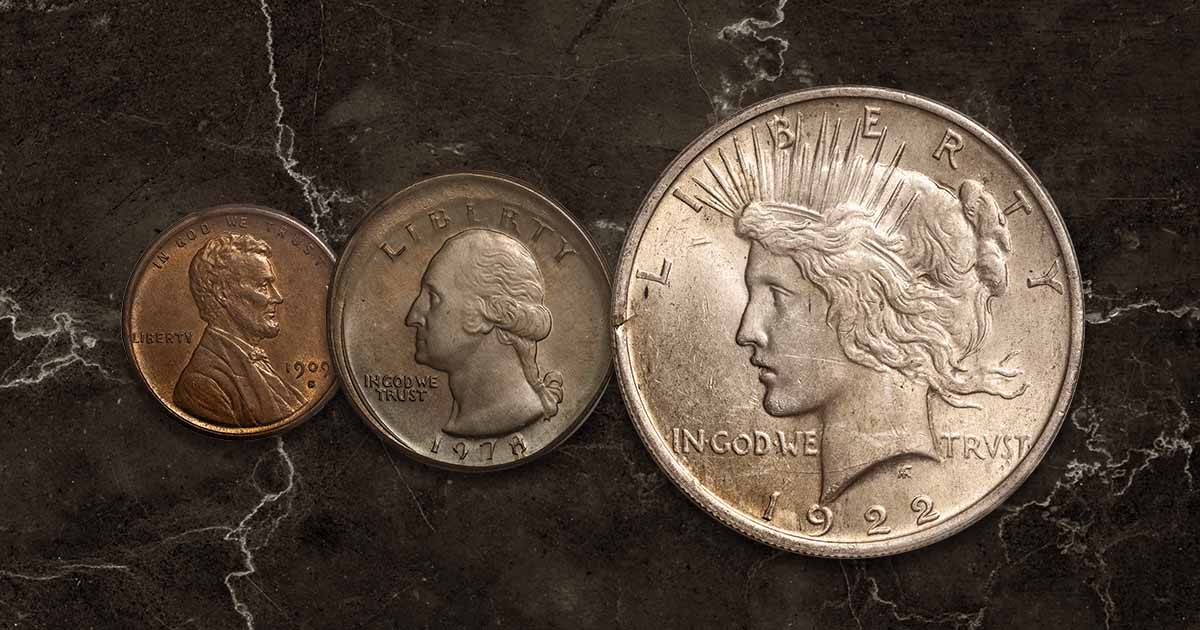
Finding the value of a wrong planchet error coin may require some effort, time, and recent auction data, but it has the potential to pay dividends. A coin’s value is derived from multiple components, like its condition, relative rarity, and market demand. Understanding an error coin through the lens of these factors will help to paint a clear and vivid picture of its value.
Identifying the Planchet
The first step is identifying the coin and its specific error. While identifying some error coins is as simple as visually examining the design, identifying the planchet that a wrong planchet error coin was struck on is more involved.
Take note of the coin’s appearance, size, and color. While there may be readily apparent details like the color of a red, red/brown, or brown penny, other U.S. coins have similar colors.
The next step is weighing the coin with a precise scale and making note of the weight, as well as measuring the coin’s diameter with a ruler or caliper. With wrong planchet error coins, the weight and dimensions will not match the design of the coin. That is, a wrong planchet error quarter on a nickel planchet will not have the same dimensions or weight as a standard quarter.
The divergent weight and dimensions should match the planchet and help to identify the specific error of the coin. Next, find a numismatic book or other reference material that details the coin’s dimensions. Compare these specifications to your coin.
If there is no suitable match, it may require the keen eye of a trained numismatist from one of the grading organizations.
Assessing the Coin’s Condition
The next step involves determining the coin’s relative condition. Using the photos of the Coin Value Guide as a reference, you can get a general idea of the coin’s condition. Pay attention to the detail remaining in the design and keep an eye out for scratches, pits, and other surface damage.
Some wrong planchet error coins are rarer than others. Understanding its relative condition from photos is not an exact science, but it will help determine if it is worth paying for the coin to be graded.
Researching Recent Sales
Now that you have a general idea of the coin’s exact error and condition, research recent sales data for similar coins. Look into auctions, dealer listings, and online marketplaces with the same error and condition. It should be clear whether the coin is rare and what coins with the same error have sold for in recent months or years.
At this stage, it is worth consulting an expert numismatist or coin dealer to glean insight based on their experience and knowledge. It may be worth the fee to have a third-party grading service authenticate the coin, which will make selling it and insuring it easier.
What are Wrong Planchet Error Coins?
Wrong planchet coin errors are among the most common minting errors on U.S. coins. Since a coin has been struck on the planchet intended for a different denomination, wrong planchet errors may also be referred to as denomination errors.
Denomination error coins will have the same size and weight as the coin the planchet is used for. You may notice that something looks wrong with the design, as it will be askew in one way or another. This may be a design that does not reach the rim of the coin, appearing as if it was abruptly cut off during the minting process.
What Causes a Wrong Planchet Error?
Wrong planchet error coins are the result of either using the wrong coin dies to strike a coin or feeding the wrong planchet into the coin press. They are similar to transitional error coins.
How are Wrong Planchet Errors Different from Transitional Errors?
The primary difference between the wrong planchet and transitional errors is that transitional errors happen because of changes to the composition of a coin type. Older planchets from the previous issue that are left over in the hopper, which feeds the coining press, are struck with the current date and design and issued as circulating coins. These will have the same size as the current years issue but their weight may be different as a result of changes to the mixture of metals that compose the coin.




